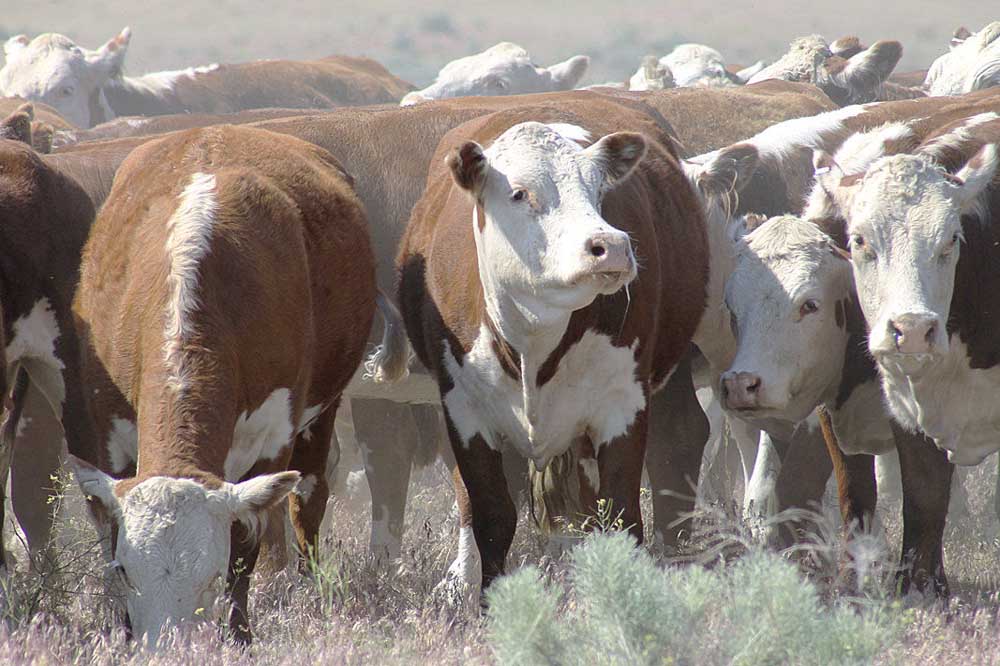Study measures environmental impact of beef cattle
Published 2:45 pm Thursday, March 14, 2019

- Cattle graze on rangeland in this Capital Press file photo. A planned USDA-certified processing plant and retail facility in Laramie, Wyoming, will be a significant development for small producers around the state who have longed for a means to sell their product locally.
A five-year study to quantify the resource use and emissions of U.S. beef cattle production shows it is not a major contributor of greenhouse gases.
But it also shows room for improvement when it comes to water use and other factors such as the reactive nitrogen in cattle waste.
The nationwide study was initiated and partially funded by National Cattlemen’s Beef Association and led by USDA Agricultural Research Service to assess and improve the industry’s sustainability.
The aim was to get sound, scientific-based information on the impacts of beef production and to define baseline measurements, Al Rotz, ARS agricultural engineer and team leader for the study, said.
The analysis encompassed about 150 representative cattle production systems in seven regions of the country and included 2,270 survey responses and site visits nationwide.
The analysis assessed the environmental impacts of beef cattle production from birth to slaughter, taking into account upstream sources including the production of fuel, natural gas, electricity, fertilizer, purchased feed, machinery, seed and pesticides.
It measured the use of fuel, feed, forage, electricity, water, fertilizer and other inputs to determine the annual greenhouse gas emissions, fossil energy use, non-precipitation water use and reactive nitrogen losses.
What it found was in the seven regions combined, beef cattle production accounted for 3.3% of all U.S. greenhouse emissions. Fossil energy use accounted for 0.7% of the total consumed nationally and about 1.9% of the U.S. total used for transportation.
It also found that beef production accounted for 5.8% of total U.S. fresh water withdrawals. Reactive nitrogen losses, mainly in the form of ammonium from cattle waste, account for 15% of the U.S. total.
Socially, a lot of the attention has been given to greenhouse gases in regard to beef cattle production, but cattle in the U.S. are not really contributing to the increase in global warming and related effects on climate change, Rotz said.
But “water use and reactive nitrogen losses are concerns the industry will have to deal with,” he said.
Water is mostly an issue in the south-central region and the West and is becoming scarcer, particularly for irrigated crops. That issue is going to be a challenge, he said.
As for reactive nitrogen losses, there is technology that can greatly reduce them but it’s extremely expensive, he said.
Because things vary a lot from operation to operation and region to region, improvements to sustainability will have to be site-specific, he said.
“Not one technology or strategy can be used everywhere and make an impact,” he said.
The industry can use information from the study to explore ways of reducing its environmental footprint and improve sustainability.
“The major reason this was done, and what we accomplished, was to get good baseline information. That will be helpful as we go forward and plan for the future,” he said.
In the next six months, Texas A&M University will combine data from the study with post-harvest data on processing, packing, distribution, retail, consumption and waste handling to produce a full lifecycle assessment of U.S. beef.







